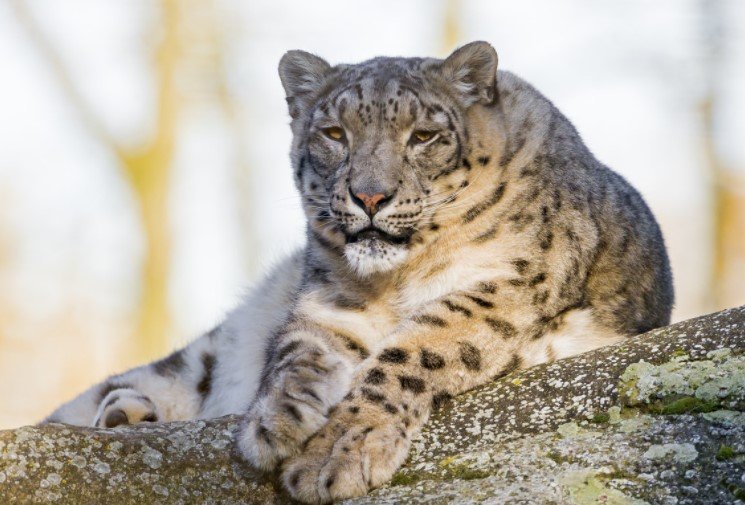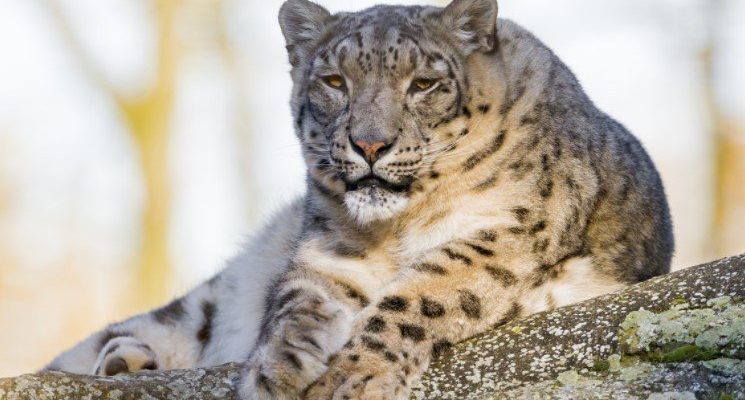
What’s surprising is how these misunderstandings can shape our views on wildlife conservation and the importance of protecting these magnificent animals. So, let’s take a moment to clear the air and explore some of the most common misconceptions about snow leopards. Not only will we unravel the truth, but we’ll also appreciate why these magnificent cats matter more than we often realize.
1. Snow Leopards Are Just Like Other Big Cats
You might be surprised to learn that snow leopards aren’t just scaled-down versions of lions or tigers. Snow leopards belong to their own genus, *Panthera uncia*, and they have unique adaptations that help them thrive in their harsh mountain habitat.
For instance, their thick fur and long tail are designed for survival in cold, rugged terrains. The fur keeps them warm, while the tail helps with balance as they navigate rocky cliffs. In contrast to other big cats that may share habitats, snow leopards have a more solitary and elusive nature. They’re like the introverted cousins of the feline family—stealthy and often unseen.
Their paws are also larger and covered with fur on the bottom, which helps them walk on snow without sinking. This adaptation is unlike many other big cats, making them specially equipped for their environment.
2. Snow Leopards Are Dangerous to Humans
One big misconception is that snow leopards are a threat to humans. Honestly, the reality is quite the opposite. Snow leopards are very shy creatures that prefer to avoid encounters with people. Reports of snow leopard attacks on humans are extremely rare.
The truth is, these cats would rather blend into the rocky mountains than confront any potential threat—humans included. Their primary focus is on their natural prey, which includes animals like blue sheep and mountain goats. So, if you find yourself in snow leopard territory, there’s no need to fear; these magnificent creatures are more interested in avoiding you than attacking.
Moreover, as habitats encroach due to human expansion, snow leopards are often as scared of us as we might be of them. Protecting their habitat is crucial for their survival and can help mitigate any perceived danger.
3. Snow Leopards Can’t Survive in Warmer Climates
You might think that snow leopards are strictly creatures of the cold. Here’s the thing: while they thrive in chilly mountainous regions, they’re adaptable. They can also be found in slightly warmer habitats, such as temperate forests or shrublands, at lower altitudes.
While their thick fur and body build make them perfect for snowy conditions, they can survive in a range of environments. However, this doesn’t mean they can easily tolerate extreme heat. It just shows that their adaptability is a testament to their resilience as species.
Conservation efforts often focus on understanding these adaptable traits. In a changing climate, where habitats are shifting, knowing that snow leopards can adjust is critical for their ongoing survival.
4. Their Population Is Increasing
It’s easy to think that just because we rarely see snow leopards, they must be thriving. Unfortunately, this misconception couldn’t be more wrong. Snow leopards are classified as vulnerable due to habitat loss, poaching, and decreasing prey populations.
Conservatively estimated, there are only about 4,000 to 6,500 snow leopards left in the wild. That’s not a lot when you consider the vastness of their habitat. Although some conservation efforts are underway, their population is still at risk. If we don’t act now, we could see significant declines in their numbers.
Awareness brings action. The more people know about the challenges snow leopards face, the more support they can rally for conservation efforts.
5. Snow Leopards Are Oblivious to Their Threats
It’s tempting to think that animals don’t understand the threats they face. But believe it or not, snow leopards are incredibly intelligent and instinctual hunters. They know how to adapt their hunting strategies based on their environment and the behavior of their prey.
In fact, studies show that snow leopards have keen problem-solving skills. They’ve been observed using their environment to their advantage by utilizing cliffs and rock formations to stalk their targets. It’s like watching a game of chess, where every move is calculated to ensure their survival.
This intelligence extends to their social behavior as well. Snow leopards communicate through calls, markings, and scent, keeping each other informed about their territory and potential threats.
6. Snow Leopards Are Solely Solitary Animals
You might picture snow leopards as lone wolves—err, cats—spending their lives in solitary silence. While they are generally solitary, especially when hunting or raising young, they aren’t always alone.
Snow leopards can be social, especially during mating season or when a mother raises her cubs. In fact, a mother might stay with her cubs for up to two years before they become independent. During this time, they learn essential skills for survival.
When it comes to territory, males may be seen sharing spaces with females during mating, or even sharing with other males. This flexibility in social structure shows that snow leopards can adapt their social behavior based on environmental conditions and available resources.
7. Conservation Isn’t Necessary for Snow Leopards
One dangerous myth is that snow leopards can take care of themselves without human intervention. Let me explain: while they are resilient animals, they still face numerous dangers that threaten their survival in the wild.
Human activities—like poaching, habitat destruction, and climate change—have significant impacts on their populations. Without focused conservation efforts, we risk losing these beautiful cats forever.
Conservation programs, which include community engagement and habitat protection, are vital for ensuring snow leopards can thrive. As communities learn to coexist peacefully with these majestic creatures, both can benefit from what the environment has to offer.
Snow leopards hold a special place in the ecosystem, and understanding the truths about them helps us appreciate their uniqueness. Busting these myths not only strengthens our connection to these magnificent cats but also emphasizes the importance of conservation efforts.
As we continue to advocate for the protection of snow leopards, we ensure that future generations can enjoy the sight of these beautiful creatures in their natural habitat. So next time you hear something about snow leopards, you’ll know the facts and can share the truth. Let’s keep the ghost of the mountains alive!

